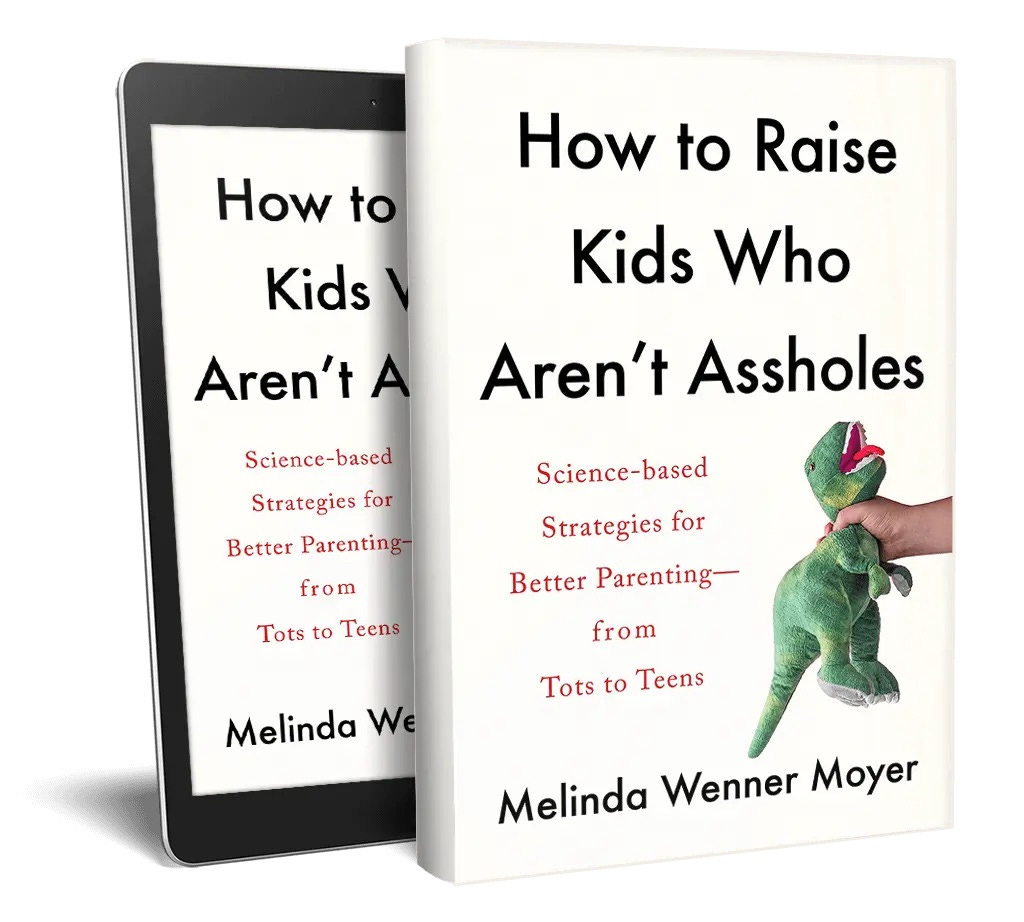Let's Raise Kids Who Will Vote for Black Women
On the pressing need to teach kids about sexism and racism — and how to do it.
It is hard to feel optimistic right now. I’m heartbroken by the choice our country made last week — though, sadly, not surprised. My lack of surprise disheartens me, too.
But when I woke my kids up on Wednesday morning, I realized that I am not without hope. They are my hope. My daughter cried and said she was so sad for Kamala and all of the people whose lives will be hurt by a Trump presidency. She understands what’s at stake. And she’s only ten.
My 13-year-old son was more shocked and appalled than sad. I asked him at breakfast on Wednesday if he thinks his generation will make better choices, and he said he was certain that they would. I know he can’t speak for all the country’s 13-year-olds, but his answer made me feel a little better.
I really do hold out hope for our kids. Maybe that’s because I need to in order to keep going. But I also know that some of the things that got us here — racism and sexism among them — are not inevitable. Science tells us that they are biases and patterns of thinking that parents can help to prevent.1
If nothing else, this election is proof of how important it is for us to be thoughtfully engaging with our kids on these issues — so that future generations will elect competent Black women over incompetent white men. Through the activism of our parenting, we can build a better democracy.
Talking about racism and sexism makes kids less biased
I know there are parents out there — white parents especially — who worry that talking about racism and sexism will make kids more biased, not less. But science says otherwise.
First, we know from a growing body of research that conversations about race and racism help kids notice and challenge racist behavior.
When we stay silent about these issues, we don’t prevent our kids from noticing and making inferences about race — we just ensure that the inferences they make are the wrong ones. We know that babies as young as three months old can discern racial differences, and that they they prefer looking at faces that share their caregivers’ skin color. Racial awareness and prejudice continue to develop during the preschool and grade school years; in one study, many white preschoolers admitted they didn’t want Black friends.
Why does this happen? It’s not because kids are born racist. It’s because kids notice our society’s salient racial hierarchy and draw the wrong conclusions from it. They see that Black and brown people tend to end up with less power and prestige than white people do — I mean, just look at the outcome of this election. Kids know that power is important, so they try to understand why these differences exist. Unfortunately, the simplest explanation — and the one kids will internalize if they aren’t given an alternative — is that white people are more powerful because they are simply better, smarter, and more deserving.
The same problems arise with gender. Kids can easily see that men tend to have more power and prestige in society, and they immediate draw conclusions from it. By the time kids are seven, kids — both boys and girls — believe boys are more likely than girls to be “really, really smart.” Parents often inadvertently reinforce these ideas in how they engage with their sons versus their daughters. They spend more time talking to boys than girls about complex topics such as money and science, and they search online for information on whether their sons might be “gifted” 2.5 times more often than they do for their daughters.
To challenge these erroneous ways of thinking, we need to recognize that our daughters are just as capable as our sons — and treat them as such. We need to expose our kids to diversity and model We also need explain the real reasons men and white people have so much power: sexism and racism. We need to ensure that our kids understand that the causes of these hierarchies are not biological. They are structural.
How to talk to kids about racism and sexism
These are big, messy issues and it can be hard to know how to talk to kids about them. Here are a few simple strategies to get you started. There are plenty more in my book How to Raise Kids Who Aren’t Assholes, so pick up a copy if you haven’t already!
Remember that it’s OK if you “mess up.” If you’re new to talking about these issues, you may not know exactly what words and phrases to use. That’s okay! If you say something and later wish you’d worded it differently, that’s a wonderful opportunity to raise the topic again and clarify your explanation. It’s helpful for kids to see that we aren’t omniscient. And it’s great to find reasons to make the conversation an ongoing one.
Normalize noticing and acknowledging race and ethnicity. If you’re out with your child and they comment on someone’s skin color or ethnic hairstyle, don’t shush them. All that does is communicate to kids that race is a taboo, dangerous topic. Instead, try to neutrally engage with your child. If your kid says, “That lady’s skin is so dark!” You can say, “Yes, it is — skin comes in all different colors and shades, isn’t that cool?” It’s okay for kids to notice these differences. We all do.
Keep in mind it’s OK to use books as conversation starters. There are so many wonderful books about race and gender to help you start conversations with little kids. Here are a few to get you started. Keep in mind that some books are vague — they’ll focus on lessons like “we should be kind to people who look different from us” or “anybody can do anything” — and kids often don’t get that these refer to racism or sexism. (As an example, when my daughter was in kindergarten, she came home from her day-long school celebration of Martin Luther King, Jr. without even knowing he was even Black.) Use these kinds of broad references as springboards for more specific, explicit conversations.
On gender/sexism/feminism: Being You: A First Conversation About Gender by Megan Madison et al; Pink is for Boys by Robb Pearlman; Julián is a Mermaid by Jessica Love; Clive and his Babies by Jessica Spanyol; Grace for President by Kelly DiPucchio (too soon?).
On race/ethnicity/racism: Our Skin: A First Conversation About Race by Megan Madison et al; All the Colors We Are by Katie Kissinger; I Am Enough by Grace Byers; Mama’s Nightengale by Edwidge Danticat; Henry’s Freedom Box by Ellen Levine.
Take advantage of day-to-day opportunities to point out racism and sexism. If you’re driving by an antiracist yard sign, point it out and ask your kids if they know what it refers to. If Trump says something racist or sexist, bring it up with your kids. Children’s books, TV shows and movies are full of sexist and racist tropes, too — press pause and have a conversation. Start with open-ended questions, like “Did you notice what that character just said to her? Why do you think he said that?” or “Have you ever noticed that so many of the bad guys in movies have dark skin? Why do you think that is?” The election is a perfect example of how these issues shape people’s lives — I would avoid demonizing all Trump voters as sexists and racists, but you can absolutely make the point that some people may have voted for Trump because they don’t believe a Black woman could make a good president.
How have you talked to your kids about racism and sexism? Share in the comments!
I do not think all Trump voters are racists and/or sexists — I know people voted for him for a variety of reasons. But I do believe racism and/or sexism shaped some people’s choices.







I have voted blue for my whole life, but didn't in this election and it had nothing to do with racism or sexism. It makes me sad that so many people claim that this is what drove the election results - it's an easy answer that allows the Democratic Party to not look inward and see where they have gone so very wrong. I hear the same from so many others like me. I won't go into all the issues that made me vote the way I did, but I hope you keep an open mind about what really happened. Maybe read and watch something from the other side. Here's one video that will help https://www.youtube.com/watch?v=99uL8KYxBI4
If we have taught our kids to be kind, it’s a really simple path to talking about not being cruel. They’re smart. When they see somebody who is mean or hateful, who tells lies over and over, who bullies, who mocks with petty nicknames, who says truly awful things about women and disabled people, people with different skin color or people who immigrated here from other countries — kind kids know in their hearts it is wrong.
Whether it is a teacher, a friend’s parent, or a political leader, kids identify it the same way.
Your kids’ concerns say a lot about their values and how you have raised them, Melinda. May they do better than the adults who I believe have failed them.